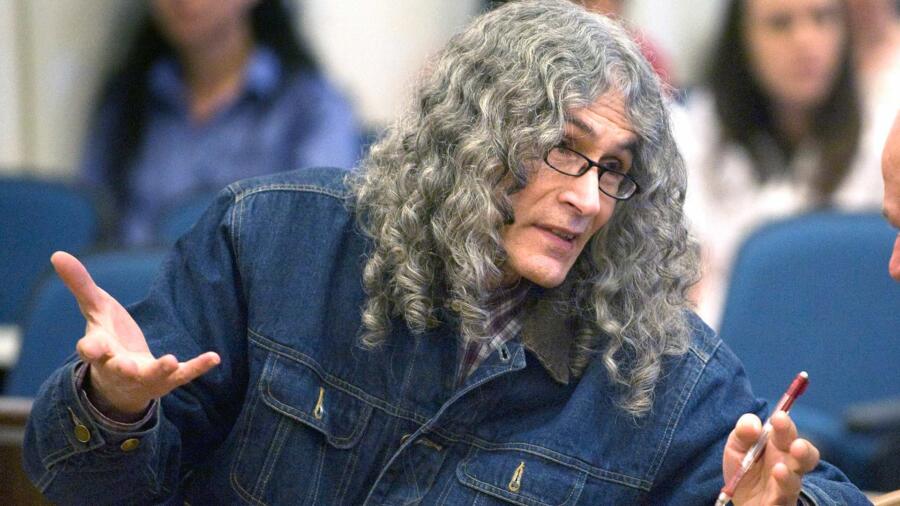Introduction: The Camera Didn’t Catch Everything
When millions tune into their favorite game shows, they expect laughs, trivia, and lighthearted competition—not future killers grinning on screen. But history shows a disturbing reality: some murderers use television to blend into society, enjoying brief fame while hiding terrible secrets.
Rodney Alcala: The Dating Game Killer Who Played Along
In 1978, Rodney Alcala stood under the studio lights of The Dating Game, joking with the bachelorette, Cheryl Bradshaw. The audience laughed, unaware they were watching a serial killer.
Alcala had already murdered multiple women. He had a long history of sexual violence, yet producers still cast him. Bradshaw felt uneasy after their date and chose not to pursue it—an instinct that likely saved her life.
Alcala later received convictions for seven murders, though authorities believe his victim count may exceed 100.
“For a serial killer, there’s always a narcissistic need for attention. They believe they are untouchable,” explained forensic psychologist Rod Hoevet.
John Cooper: Bullseye Appearance Leads to His Arrest
British killer John Cooper appeared on the game show Bullseye in 1989. He spoke confidently about Pembrokeshire—ironically, the same area where he had committed brutal crimes. Four years earlier, he murdered a brother and sister, and shortly after his TV stint, he killed a vacationing couple.
Years later, detectives matched his face from the show to a suspect sketch. That connection led to his conviction in 2011.
“Malignant narcissists believe they’re the smartest in the room,” Hoevet stated. “Even if they’re caught, they assume they can talk their way out of it.”
Edward Wayne Edwards: From Motivational Speaker to Murderer
In 1972, Edward Wayne Edwards sat under the bright lights of To Tell the Truth, portraying himself as a reformed ex-con. The panelists guessed who the “real” Edwards was—but even the show’s creators didn’t know they’d booked a killer.
He wrote a book about his supposed transformation and gave talks on redemption. In reality, he had already committed murder.
His own daughter would eventually alert police, leading to his 2009 arrest. He confessed to five killings, but suspicions point to more.
Ryan Jenkins: A Reality TV Contestant With a Dark Secret
In 2009, Canadian real estate developer Ryan Jenkins appeared on Megan Wants a Millionaire. Handsome and wealthy, Jenkins seemed like a great match—until investigators found his wife, Jasmine Fiore, murdered and mutilated.
Jenkins had become possessive and violent. After the killing, he fled to Canada and later took his own life in a motel.
“The speed of their marriage and the way he sought validation rather than real connection speaks to deep insecurities,” said forensic psychologist Joni Johnston.
Tim Bliefnick: The Family Feud Contestant Who Crossed the Line
In 2019, Tim Bliefnick made a controversial joke on Family Feud. When host Steve Harvey asked, “What’s the biggest mistake you made at your wedding?” he responded: “Honey, I love you, but… said ‘I do.’”
The audience laughed uncomfortably.
Four years later, that joke echoed darkly. In 2023, Bliefnick was convicted of murdering his estranged wife, Rebecca, just days before their divorce trial. The court sentenced him to life in prison.
Why Game Shows Attract Dangerous Personalities
What makes killers gravitate toward game shows? It’s more than coincidence. Many psychologists believe that individuals with narcissistic or psychopathic traits enjoy attention. They believe they’re above consequences and love manipulating how others see them.
“There’s nothing inherently wrong with wanting to be on a reality show or game show,” Johnston noted. “But when you have someone on the extreme end of narcissism… that’s when it becomes dangerous.”
Spotting the Warning Signs
These killers hid in plain sight. They smiled, flirted, joked—and murdered. Viewers and producers saw charm, not the cracks underneath. But there are often warning signs:
- Unsettling behavior behind the scenes
- Obsessive need for control
- Flashes of anger or manipulation
- Grandiose self-image
Sadly, most people only recognize these signs in hindsight.
Lessons from a Chilling Trend
These horrifying stories remind us that not everyone on TV deserves our trust. Fame can shield criminals temporarily, but arrogance often becomes their downfall.
Whether it’s a dated game show from the ’70s or a flashy reality series from the 2000s, the cameras sometimes catch more than entertainment—they capture the quiet smiles of real-life monsters.
Frequently Asked Questions
Did Rodney Alcala kill anyone after his Dating Game appearance?
Yes, he continued killing after the show. His known murders span from 1971 to 1979.
Was Cheryl Bradshaw harmed by Rodney Alcala?
No, she rejected the date after finding him creepy, which may have saved her life.
How did John Cooper’s TV appearance lead to his arrest?
Police used a screenshot from Bullseye to match him with a composite sketch, helping convict him.
How was Edward Wayne Edwards caught?
His daughter tipped off investigators, leading to DNA matches and confessions.
What happened to Ryan Jenkins after Jasmine Fiore’s death?
He fled to Canada and was found dead by suicide in a motel room.
Why do killers go on game shows?
Experts say narcissism and a desire for admiration push them toward the spotlight, where they feel untouchable.

